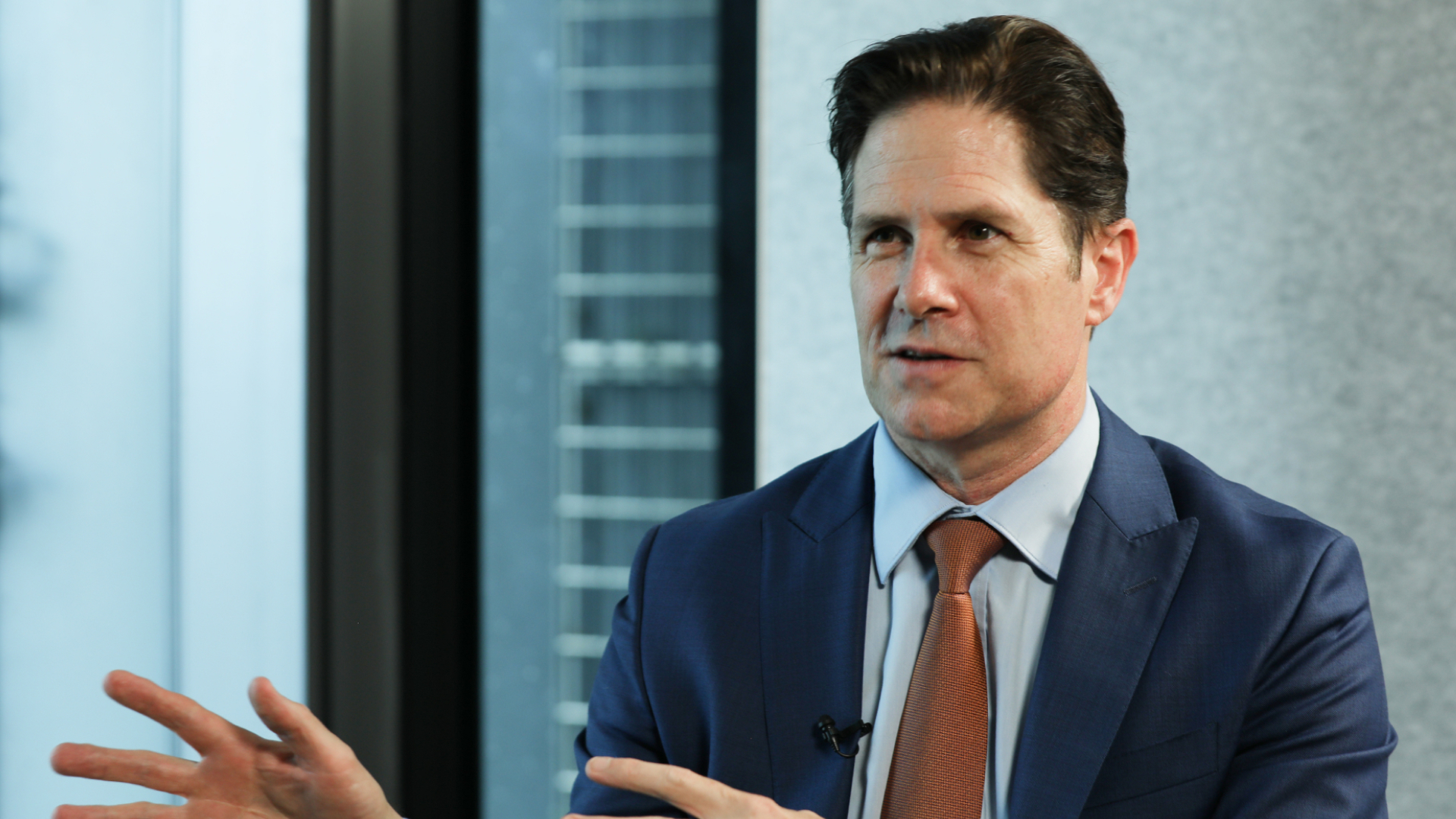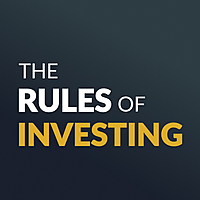Warryn Robertson: The secret to owning the world’s best assets

Warryn Robertson has spent three decades investing in assets that keep the modern world running. From toll roads to transmission lines, airports to satellites, his job is to find businesses that are essential, regulated, and built to last.
As portfolio manager of Lazard's Global Listed Infrastructure Fund, Robertson has steered through booms, busts, and bubbles. The fund recently marked its 20th anniversary, a milestone that few active strategies achieve.
“Infrastructure is not about what it looks like, it’s about how it earns its money,” says Robertson. “Define it properly, then price it right.”
In this episode of The Rules of Investing, Robertson explains why getting the definition right is everything, how digital assets like data centres fit into the picture, what will dominate the next two decades, and the infrastructure stock he’d happily own for the next five years.
Click on the player to listen or read a summary below.
Show me the money
If you take one thing from this conversation, make it Robertson’s first principle.
“The two rules that we have stuck with, firstly define infrastructure correctly, then work out the right price to pay,” he told me.
The definition part is not about what the asset looks like, it is about how the asset earns its cash flow. The target set is narrow, monopolistic, regulated or contracted revenue, often with inflation linkage, producing “a very stable, consistent and forecastable pattern of return.”
That focus lifts your odds of getting what you think you are buying. It also tells you where listed infrastructure sits in a portfolio. The asset class fills the gap between bonds and equities. It tends to be less volatile than general equities, with more upside than bonds, provided you pay the right price.
“Price is what you pay, value is what you get,” Robertson said, adding that even the world’s best assets do not deliver good outcomes if you overpay."
Interest rate moves are a good example of why definition matters. Markets often sell listed infrastructure when yields rise, but if rates are rising because inflation is higher, and your revenues are inflation-linked or regulated, economics and market narrative can diverge.
“They are considered rate sensitive, rightly or wrongly,” he said. “The nuance is why rates are moving.”
In other words, look through the knee-jerk, focus on the cash mechanics.
Which assets will dominate the next two decades?
While markets are obsessed with the opportunity in AI, Robertson argues that the same simple jobs that have powered cities and economies for a century will continue to dominate in the decades ahead.
He cites Consolidated Edison, still doing what it did 120 years ago, keeping the lights on for New York, just at a vastly bigger scale. Natural monopolies endure because they are hard to replicate and, in many cases, must be regulated to protect users and investors. That is the point. The technology stack on top of these assets will change. The networks beneath still earn, because the rules and the economics compel them to.
That does not mean the macro does not move the needle at the margin. European truck counts lift when trade patterns shift, US rails benefit modestly if onshoring continues, regulated utilities see demand bumps from hyperscalers. But the regulated model protects the downside, not just caps the upside.
“Stable on the downside, stable on the upside, that is what the asset class gives you, if you define it correctly,” Robertson said.
It also explains why patience is a genuine edge. Markets sometimes price these businesses like cyclical industrials, even though the cash mechanics are different. Lazard’s team has watched margin resilience through recessions, and has the scars from management teams that wandered outside their lanes.
“All you need is patience,” Robertson said. “We have had clients with us for 20 years, and we have been able to hold their hand through difficult periods.”
Data centres: Good assets without a moat
“Data centres are potentially good assets, perhaps can argue they are infrastructure, but we consider them more like property and certainly not Preferred Infrastructure,” Robertson said.
The sticking point is competitive intensity and client churn. Contracts are short, often five years, switching costs are manageable, and technological change gives customers incentives to move. “You are still seeing churn of about 10 to 15 per cent,” he noted. Those are not monopoly characteristics, and that matters if your goal is a steady, inflation-linked, decade-long earnings stream.
Where does Lazard seek digital exposure instead? Carefully, and where a moat looks more like the old economy. Think mobile towers with multi-decade master lease agreements or satellite businesses where spectrum and orbital slots are governed and scarce.
The thread is the same as with toll roads or transmission grids, clear rules, high barriers, and cash that turns up predictably.
“Unless you have some form of regulation or the same protections that natural monopolies have, you will not get that long run, sustainable pattern of returns,” Robertson said.
Public versus private infrastructure
Private capital has been a huge force over the past decade, but Robertson is blunt about the trade offs. With too much money chasing too few deals, definitions get stretched and prices get bid up.
“All that is doing is moving up the risk curve,” he said.
His team’s data show private buyers have historically paid chunky premiums for certain categories, like UK water and airports, relative to listed comparables. The listed universe remains broader, and you are not competing with a trillion dollars of dry powder trying to be spent.
Risk is yesterday's story and complacency has set in
Robertson believes the market has lost touch with risk. “Irrational exuberance has taken hold and risk is yesterday’s story,” he said. “People still believe the Fed will bail us out, always and ever.”
He describes what he’s seeing as a “melt-up” — a surge driven more by belief than fundamentals. In his view, investors are once again paying for stories instead of cash flow.
“A lot of people look at us and go, old-fashioned blokes that have been around 30 years don’t understand the new-new and how it’s going to work,” he said. “But it always comes back to one question — how does it make money?”
Robertson warns that parts of the market, particularly in areas like AI, are priced for perfection. The expectation for endless revenue growth and high margins in businesses still finding their footing doesn’t stack up against his test of value.
“The greatest asset in the world will not make you a good investment if you don’t pay the right price for it,” he said. “People are getting caught in the story and the potential of the what or the how, rather than the cash it will actually produce.”
One stock to own for the next five years
We finished with a hypothetical we like to ask every guest. If markets shut for five years, and you could own only one stock, what would it be and why? Robertson’s previous pick was Ferrovial, which has had a strong run. In this episode, he nominates SES, the Luxembourg-listed satellite operator as his pick.
SES controls a dominant position in geostationary, or GEO, orbital slots, the regulated highway that sits roughly 36,000 kilometres above the Earth. After a recently approved merger with its closest GEO competitor, Robertson estimates the combined group controls about 70 percent of GEO capacity globally.
Spectrum and slot rights are not easily replicated. They are assigned and overseen by bodies like the FCC, the European Commission and the UN’s coordination frameworks. That kind of scarcity and oversight looks a lot like the monopolies Lazard prefers in the physical world.
SES also brings middle-Earth orbit, or MEO, rights to the table, which work alongside low-Earth orbit, or LEO, constellations such as Starlink. In practice, the mix allows SES to serve use cases that value coverage, reliability and handoffs, think in-flight connectivity, maritime and remote enterprise.
“It is a mature business that owns very good assets,” Robertson said.
He argues that the market has been captivated by LEO’s growth story, leaving SES underappreciated, even as it pays investors to wait with a double digit dividend yield and uncounted merger synergies.
“At current prices, SES might just be the cheapest infrastructure stock in our universe,” Robertson said. “We are getting paid to wait, and the assets are only getting better.”
2 topics
1 contributor mentioned


